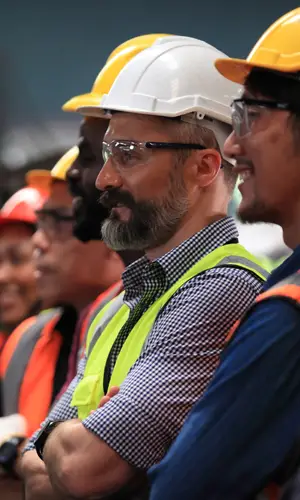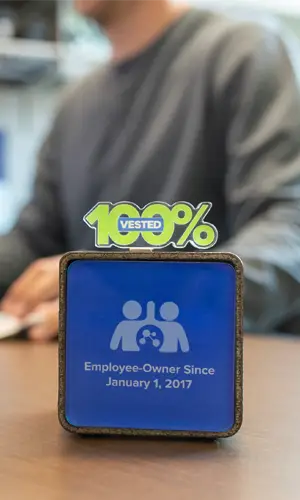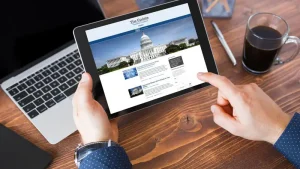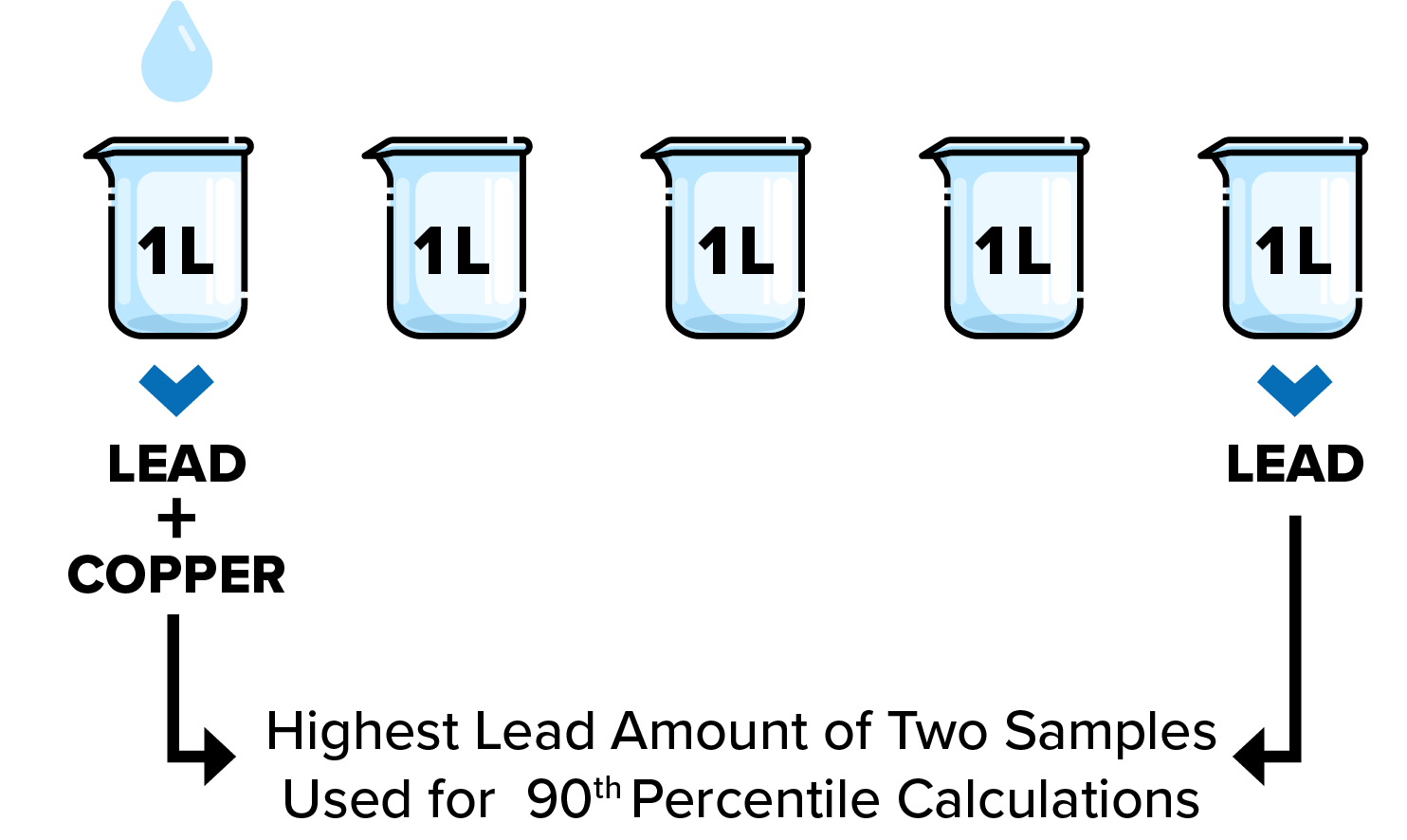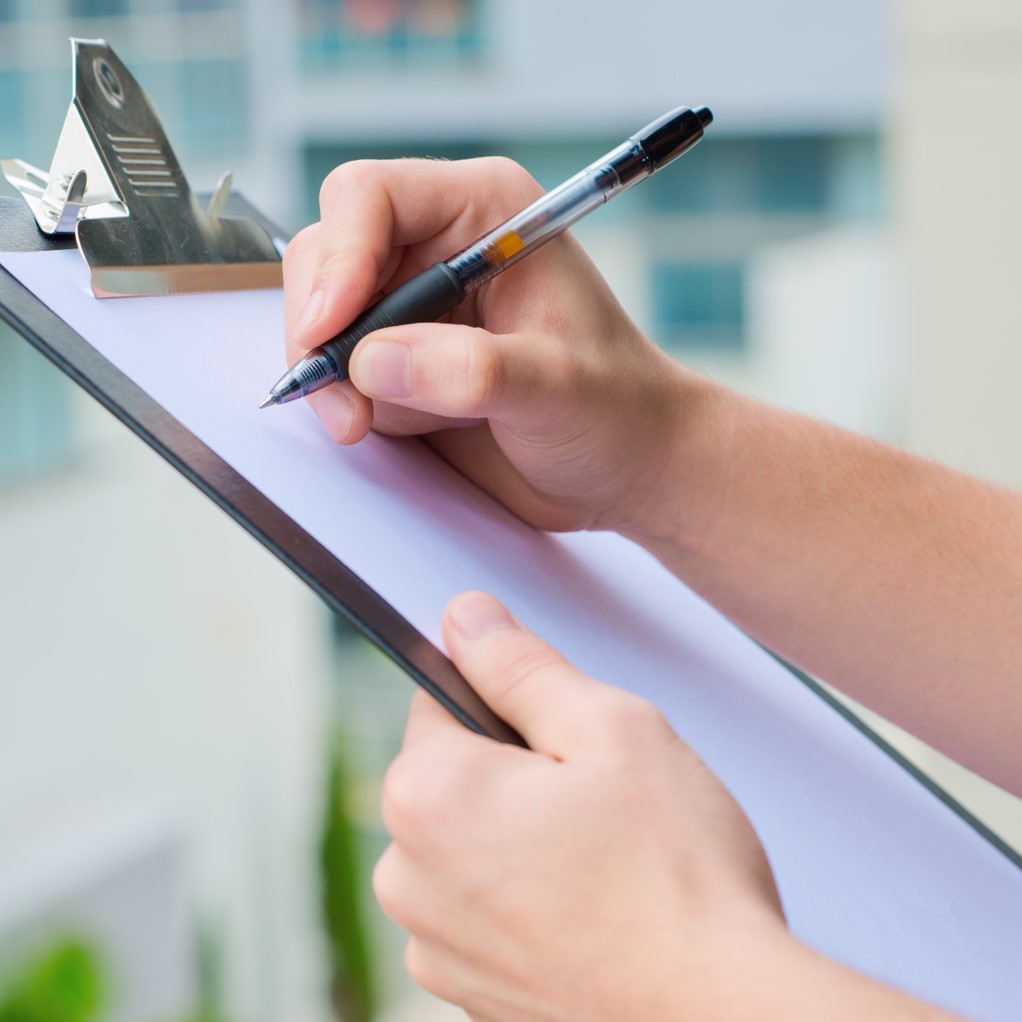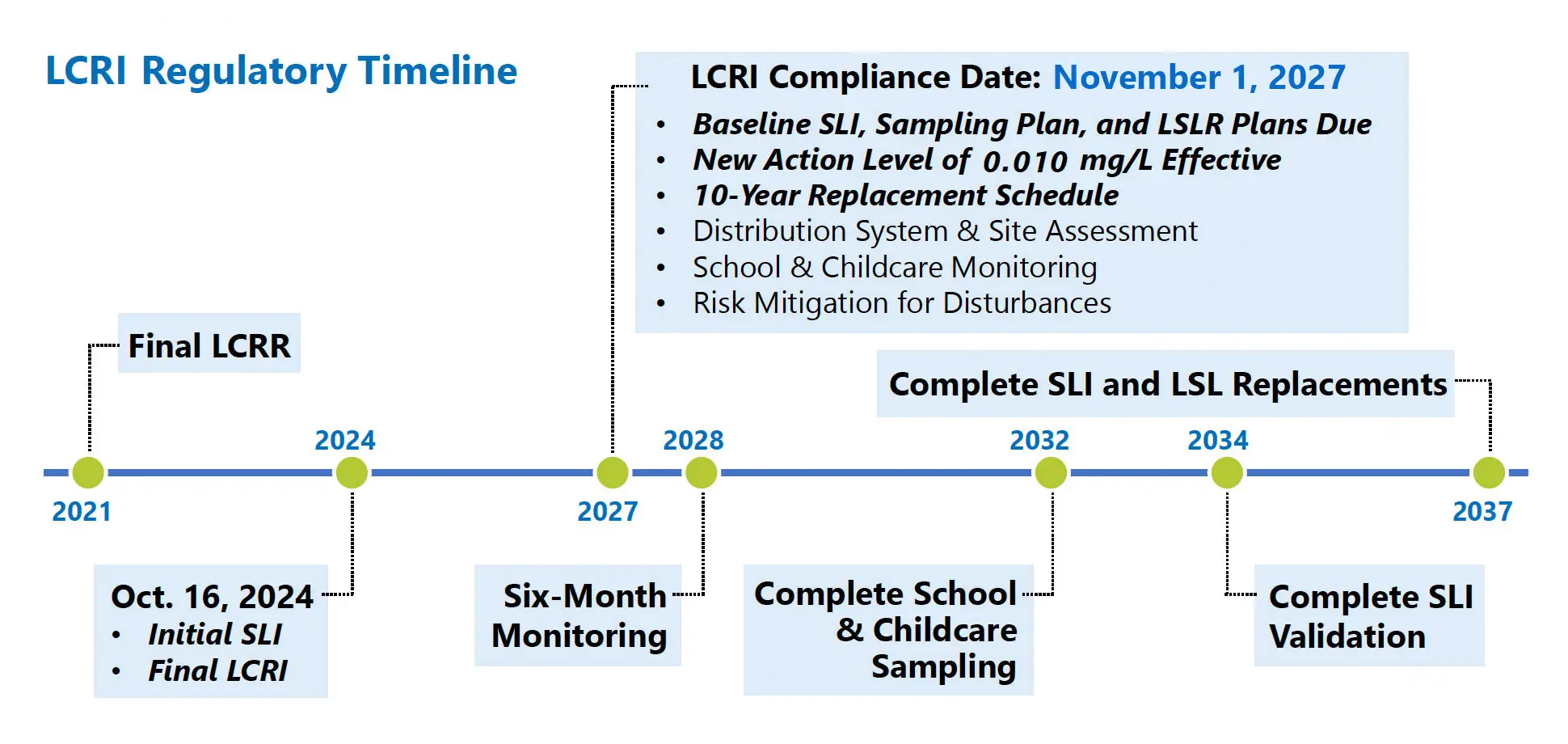Service Line Replacement Plan Requirements
All systems with at least one lead, GRR, or unknown service line must develop the
service line replacement plan by the compliance date of November 1, 2027. The plan includes the elements from the LCRR as well as two new elements:
- A strategy for determining the composition of lead status unknown service lines in its inventory;
- A procedure for conducting full lead service line replacement;
- A strategy for informing customers before a full or partial lead service line replacement;
- A procedure for customers to flush service lines and premise plumbing of particulate lead;
- A lead service line replacement prioritization strategy based on factors including but not limited to the targeting of known lead service lines, lead service line replacement for disadvantaged consumers and populations most sensitive to the effects of lead;
- A funding strategy for conducting lead service line replacements which considers ways to accommodate customers that are unable to pay to replace the portion they own;
- A strategy to inform customers; and consumers (persons served) about the plan and replacement program.
- An identification of any legal requirements or water tariff agreement provisions that affect a system’s ability to gain access to conduct full service line replacement.

